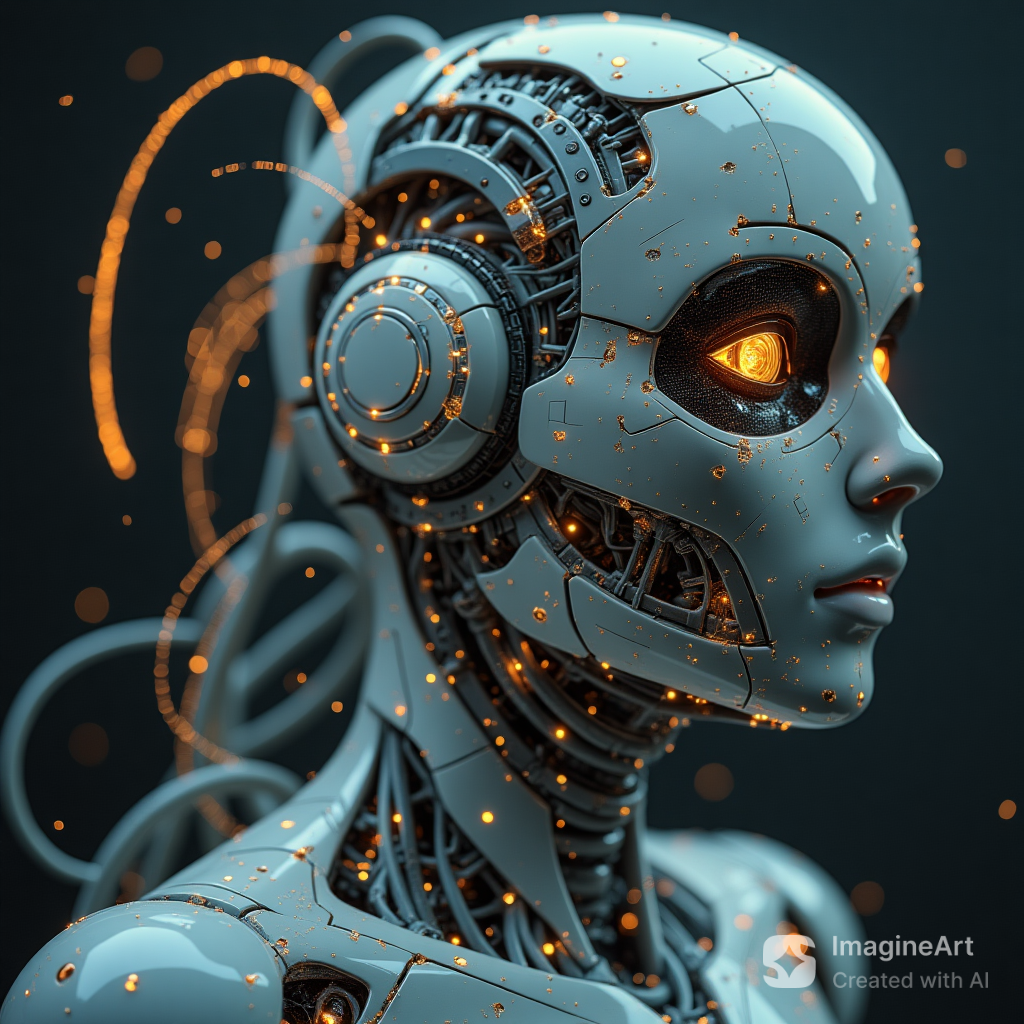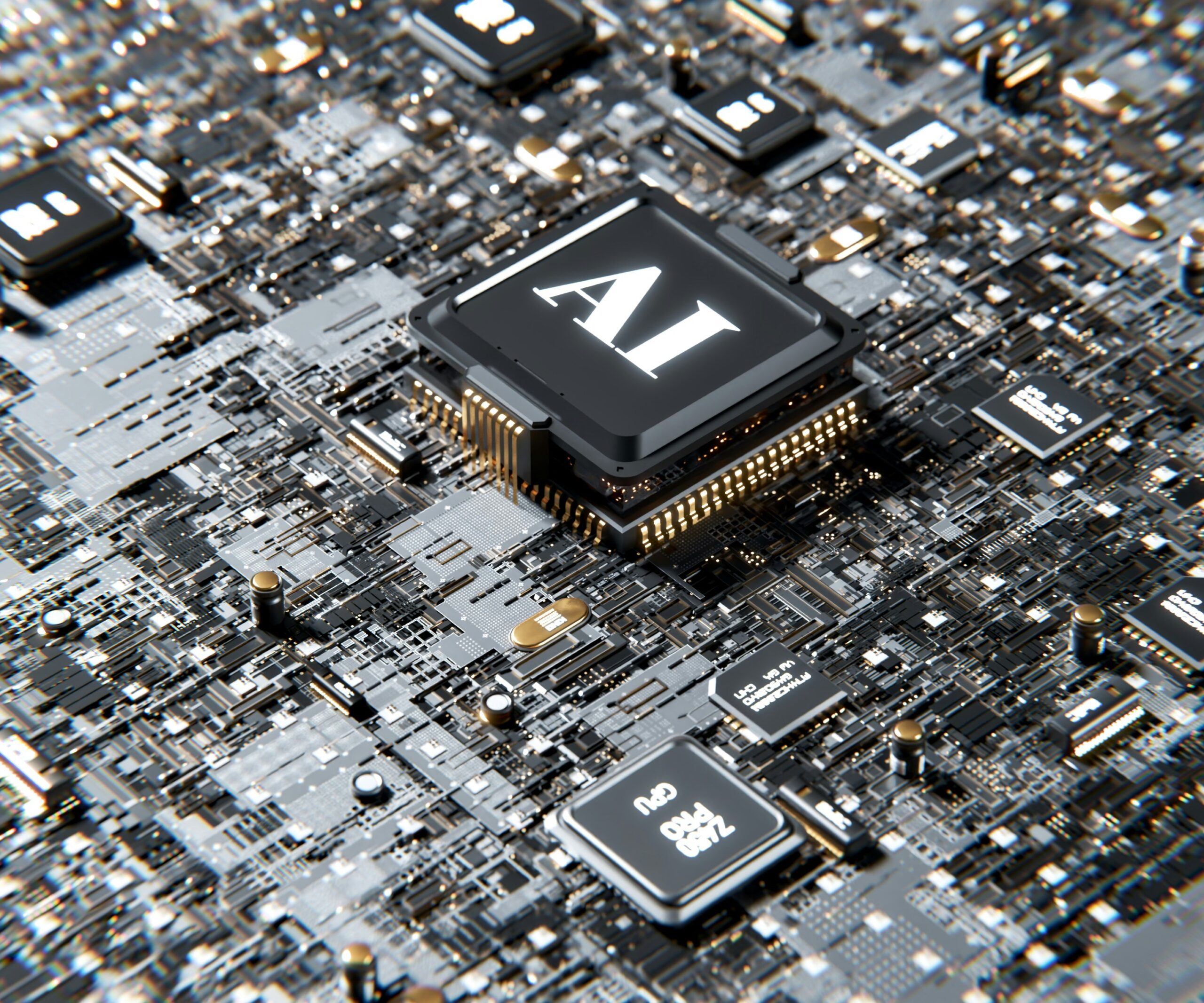
Overview of Machine Learning (ML) and Artificial Intelligence (AI)
Have you last heard about technology without the mention of AI? Well, it is coming to our phones too. But what is happening in the back-end?
And why does it always come with the combination of Machine learning? There is a lot to learn here, and that is why we are here to help.
Artificial intelligence (AI) is the imitation of human intellect in computers, allowing them to carry out activities like problem-solving and decision-making that normally need human intelligence.
As a branch of artificial intelligence, machine learning (ML) focuses on creating algorithms that let computers learn from data and get better over time without explicit programming.
Gaining an understanding of the fundamental ideas behind AI and ML is essential to appreciating their importance and their influence on a wide range of sectors.
Let’s dive into this topic!
Origins in History and Development of AI and ML

The foundation for intelligent robots was built by pioneers like Alan Turing and John McCarthy in the middle of the 20th century, which is when artificial intelligence (AI) first emerged.
Over the years, significant progress in artificial intelligence (AI) has been made thanks to developments in processing power, creative algorithm development, and data accessibility.
Advancement In Neural Network
Advances in neural networks, statistical modeling, and optimization approaches have spurred the exponential expansion of machine learning.
How did we go from rule-based systems to DL structures?
Our approach to solving complicated issues and automating cognitive processes has changed dramatically as a result of the advancement of AI and ML, from rule-based systems to deep learning structures.
Important Ideas and Methods in Machine Learning

Finding patterns and insights in data using a variety of algorithms and approaches is the goal of machine learning. Below are some important ideas and methods.
- Supervised Learning
In supervised learning, new data points are classified or predictions are made by training a model using labeled examples.
- Unsupervised Learning
Unsupervised learning, on the other hand, employs dimensionality reduction or clustering to find underlying structures and correlations in unlabeled data.
- Trial And Error
Through trial and error, reinforcement learning teaches agents how to interact with their surroundings and discover the best techniques.
Depending on the nature of the problem and the availability of labeled data, each strategy offers advantages and uses.
Applications of AI and ML in the Real World

AI and ML have many real-world applications across a variety of industries, from banking and healthcare to entertainment and transportation.
- Medical Field
ML algorithms are used in the medical field to analyze medical imaging, diagnose diseases, and find new drugs. This results in more precise diagnoses and individualized treatment regimens.
- Financial Institutions
Financial institutions use artificial intelligence (AI) to improve the security and efficiency of financial transactions through
- Algorithmic trading
- Fraud detection
- Risk assessment.
- Transportation System
Transportation systems that are safer and more effective are made possible by autonomous cars, which depend on machine learning (ML) for navigation, object identification, and decision-making.
AI and ML technologies are changing the way we engage with information and services in our daily lives, from virtual assistants to recommendation systems.
Difficulties and Ethical Issues with AI and ML

AI and ML have the potential to be revolutionary, but they also present serious obstacles and moral dilemmas.
Discussions on the appropriate development and application of AI systems have been spurred by worries about algorithmic bias, data privacy, and employment displacement.
How To Reduce The Risk?
To reduce risks and promote trust among users and stakeholders, AI systems must provide
- Justice
- Transparency
- Accountability.
In order to promote fair results for all parties and direct the ethical use of AI and ML technologies, ethical norms and regulatory frameworks are essential.
Data’s Function in Machine Learning

The foundation of machine learning is data, which powers model evaluation and training.
- Impact Of Data
The effectiveness and capacity for generalization of machine learning algorithms are directly impacted by the kind, volume, and variety of data.
- Subject Expertise
In the machine learning pipeline, subject expertise and creativity are essential during the steps of data preparation, feature engineering, and model selection.
- Why To Invest In Data Infrastructure
Investing in data infrastructure and governance is crucial for maximizing machine learning’s potential and spurring innovation across a range of sectors, as more and more businesses come to understand the importance of data-driven insights.
New Developments and Trends in AI and ML

Because of advances in technology, research, and business applications, the subject of artificial intelligence and machine learning is always changing.
- New Developments
More complicated activities and interactions are now possible thanks to major advancements in computer vision, natural language processing, reinforcement learning, and deep learning, a subset of machine learning.
- Emerging Ideas
Emerging concepts like federated learning and edge computing allow for decentralized model training on dispersed data sources while addressing privacy issues.
Researchers and practitioners working to improve the openness, interpretability, and equity of AI systems have brought explainable AI and AI ethics more attention.
To drive innovation and use AI and ML to address social concerns, collaboration between academia, industry, and government is crucial.
AI System Building Blocks: Algorithms and Architectures

An extensive range of algorithms and architectures suited to certain tasks and domains make up the building blocks of artificial intelligence systems.
- RNN And CNN
While recurrent neural networks (RNNs) are better suited for sequential data processing tasks like language modeling and time series prediction, convolutional neural networks (CNNs) perform well in picture identification and classification tasks.
- Transformer Designs
Transformer designs have transformed problems related to natural language processing by utilizing self-attention processes for contextual comprehension, as demonstrated by models such as BERT and GPT.
- Examples Of RLA
Deep Q-Networks (DQN) and Proximal Policy Optimization (PPO) are two examples of Reinforcement Learning algorithms that have shown impressive results in teaching agents to carry out difficult decision-making tasks in dynamic settings.
Democratizing AI: Accessible Tools and Platforms

Encouraging more people to use AI and ML technologies, irrespective of their level of technical proficiency or experience, is a key component in democratizing AI.
- AI Tools
Pre-trained models, automated machine learning, and scalable computing resources are just a few of the AI services and tools available on cloud-based platforms like Google Cloud AI, Amazon Web Services (AWS), and Microsoft Azure.
- AI Frameworks
Developers and researchers may easily create, train, and implement machine learning models with the help of open-source tools and frameworks like TensorFlow, PyTorch, and scikit-learn.
In order to promote a culture of ongoing learning and creativity, online education platforms and communities offer tools and courses for understanding AI and ML ideas.
AI and ML at Work: The Future of Work

The way we work, collaborate, and make choices is changing as a result of the incorporation of AI and ML technologies into the workplace.
Traditional employment positions are changing as a result of automation and augmentation, opening up new possibilities for creative and collaborative human-AI interaction.
- Aid Of AI Tools
Organizations may improve resource allocation, simplify processes, and extract useful insights from massive volumes of data by utilizing AI-powered tools and analytics.
- AI And Work-Force Development
In order to make sure that AI systems complement human capabilities and are in line with corporate objectives, human-centric AI design concepts like explainability and interpretability are crucial.
Programs for reskilling and upskilling workers are crucial to ensuring that they have the information and abilities required to prosper in an AI-driven economy.
Ethical AI: Foundational Ideas and Standards for Conscientious Innovation

In order to guarantee that AI and ML technologies serve society and respect core human values, ethical issues are crucial to their development and implementation.
Importance Of Ethical Framework
AI ethics frameworks, including the European Commission’s AI Ethics standards and the IEEE Ethically Aligned Design, offer standards and principles for developing, deploying, and assessing AI systems in an ethical manner.
Fundamental Values
Fundamental values that ought to guide every stage of the AI lifecycle are:
- Fairness
- Accountability
- Transparency
- Privacy
- Inclusion
From gathering data and training models to deploying and overseeing the system these values provide information on every step.
Addressing ethical issues and fostering confidence in AI systems need multidisciplinary cooperation between ethicists, legislators, technologists, and stakeholders.
In conclusion, utilizing AI and ML to their full potential for a better future
In summary, machine learning and artificial intelligence have great potential to spur innovation, resolve challenging issues, and enhance people’s quality of life everywhere.
But in order to fully realize this promise, issues like labor change, data protection, and ethical considerations must be resolved.
By adopting moral values, encouraging cooperation, and making investments in infrastructure and education, we can harness the revolutionary potential of AI and ML to build a more sustainable, wealthy, and egalitarian future for all.

